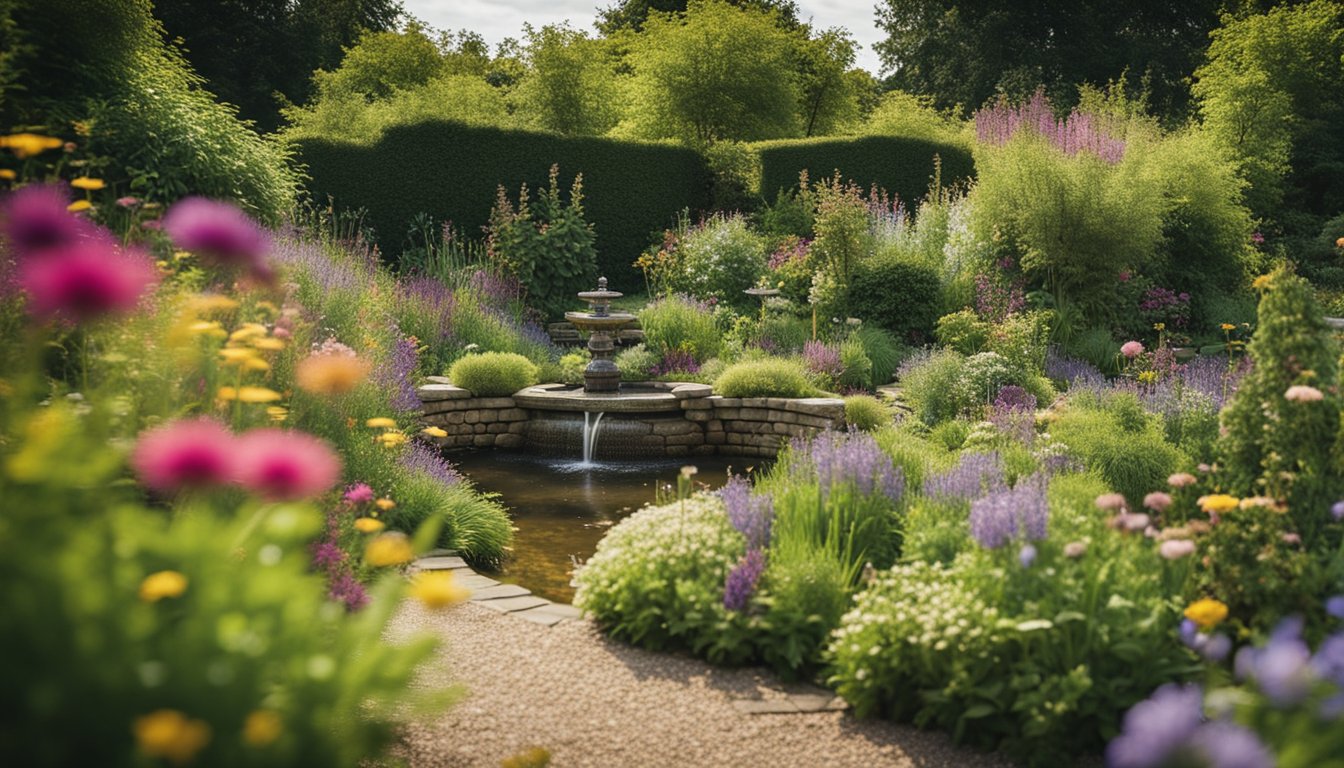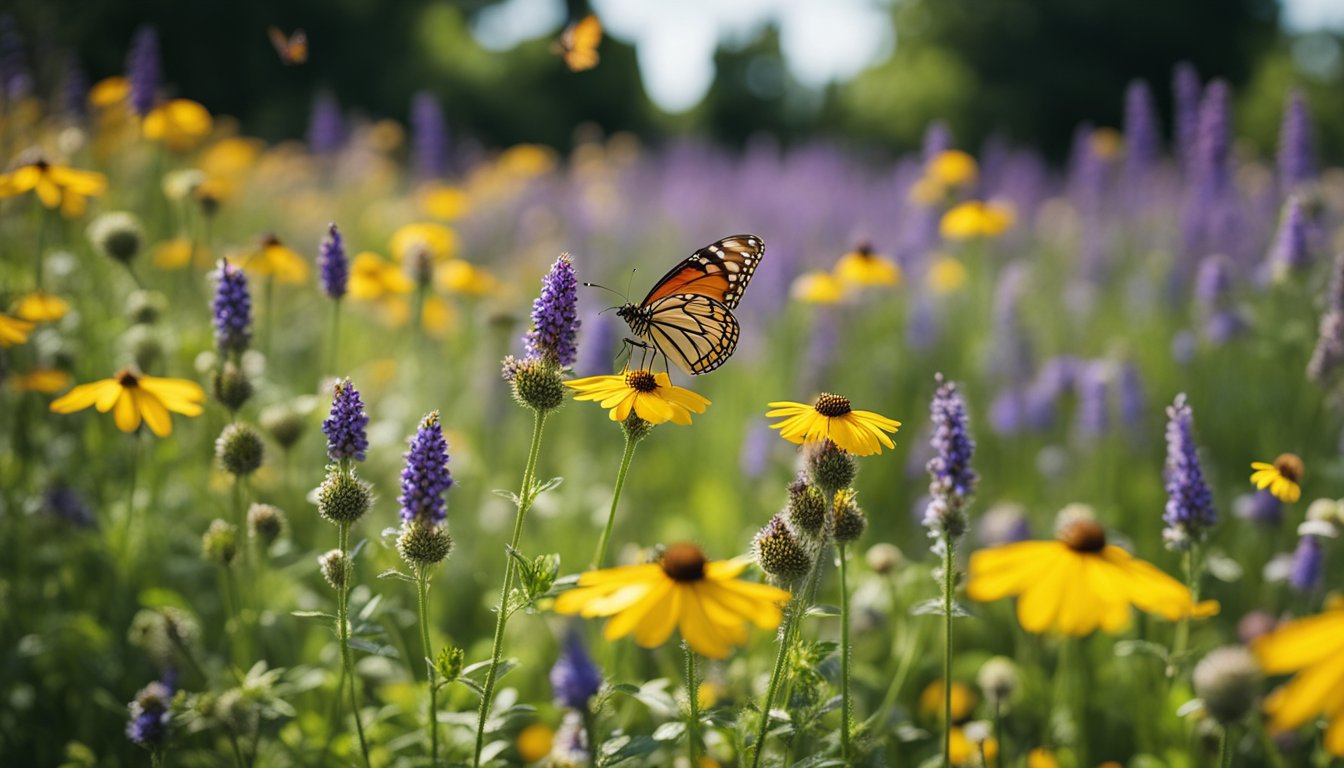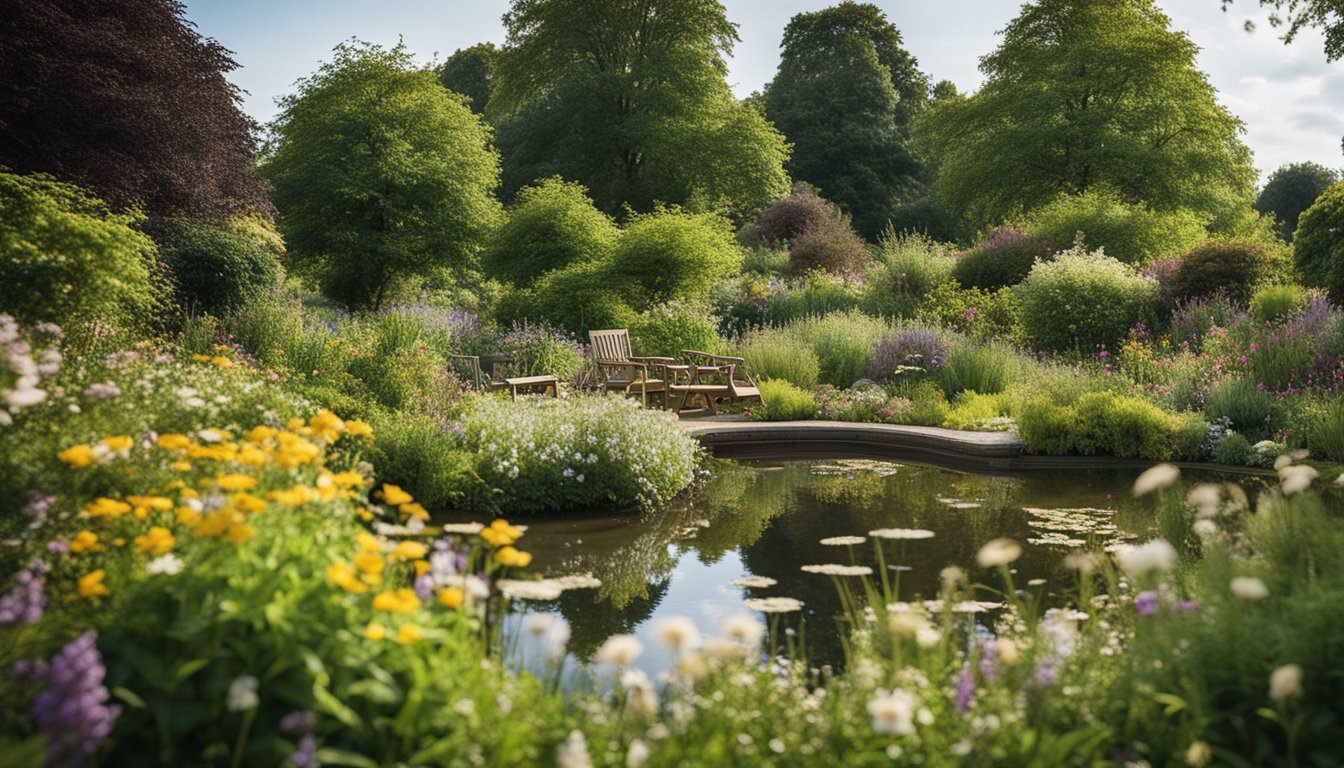Late updated: 17 Feb 2025 10:02
Written by: Emily Thornton
Creating A Native UK Garden Oasis For Bees And Butterflies: Enhancing Biodiversity
Creating a native UK garden oasis for bees and butterflies can transform our outdoor spaces into thriving ecosystems, supporting these vital pollinators while adding natural beauty to our homes. By incorporating native plants, we can provide the essential nectar and habitat these insects need to flourish. Native flowering plants and grasses offer food and shelter tailored to their requirements, enhancing biodiversity right in our backyards.

In designing our gardens, it's crucial to consider the diverse needs of bees and butterflies. Sunlit areas are generally their preferred spots, particularly for wildflower meadows, which attract a wide range of pollinators. We can also introduce habitat features such as bee hotels or butterfly-friendly areas, ensuring that our gardens become vital pit stops on their journeys.
By adopting thoughtful gardening practices, we also support food security and the wider environment. Embracing sustainability through our plant and habitat choices can foster a healthier ecosystem overall. Let's create vibrant spaces that benefit us all, promoting a sense of harmony with nature.
Key Takeaways
- Native plants support local bees and butterflies.
- Sunlit and diverse habitats attract pollinators.
- Thoughtful design enhances biodiversity.
Designing Your Garden for Pollinators
Creating a thriving garden for pollinators involves strategic plant selection, designing diverse habitats, and ensuring resources and blooms throughout the year. By focusing on native plants and providing essential shelter and water, we can support a vibrant ecosystem that nurtures bees and butterflies.
Selecting Native Plants
Native plants are essential to a healthy garden ecosystem as they have evolved to thrive in local conditions. They provide food and shelter for regional wildlife, including pollinators. In the UK, popular choices such as Buddleia, Lavender, and Red Valerian offer nectar-rich blossoms that appeal to bees and butterflies.
Cultivating native plants not only fosters biodiversity but can also make garden maintenance easier. As these plants are adapted to the local climate, they often require less watering and fewer pest control measures. They attract a range of beneficial insects, enhancing the overall garden ecosystem.
Creating Diverse Habitats
Diverse habitats are crucial for attracting and supporting various pollinators. By incorporating shrubs, flowering plants, and trees, we can create environments that cater to the nesting and feeding needs of bees, butterflies, and other beneficial insects. Dense areas of vegetation provide shelter and protection from predators.
Natural nesting spots, such as reed stems or hollow plant stems, are ideal for solitary bees like the Red Mason Bee. Incorporating a mix of open sunny spots and sheltered shady areas ensures that pollinators are comfortable throughout the day. This diversity not only attracts a variety of species but also contributes to a vibrant, healthy ecosystem.
Plant Choices for Year-Round Blooms
To support pollinators throughout the year, selecting plants with staggered flowering periods is important. Flowers such as Goldenrod, Marigolds, and Coneflowers provide blooms during different seasons, ensuring a continuous supply of nectar and pollen.
Winter-blooming plants, like Asters and Sedum, offer crucial resources when other blooms are scarce. By planning for succession planting, we can maintain year-long visual interest while supporting wildlife. Including perennials and annuals in our garden design can enhance the flowering period and provide consistent forage for pollinators.
Water Features and Resources
A reliable water source is vital for pollinators, especially during dry periods. Shallow birdbaths or small ponds can serve as inviting oases where bees and butterflies can drink and bathe. It's important to provide accessible water that won't trap small insects.
Adding pebbles or stones to water features can prevent drowning and offer resting spots. Maintaining clean water by refreshing it regularly helps discourage mosquito breeding and supports a healthy garden environment. Thoughtful planning and placement of water resources attract diverse wildlife and create a more vibrant pollinator-friendly space.
Attracting and Supporting Pollinator Wildlife

Creating a thriving pollinator garden requires specific plant selections and careful management of habitats. By focusing on the needs of bees and butterflies and establishing diverse plant life, we can support pollination cycles and protect against loss of habitats.
Attracting Bees and Butterflies
To entice bees and butterflies into our gardens, planting nectar-rich plants is essential. Varieties such as Verbena bonariensis, honeysuckle, butterfly bush, and bee balm provide the sustenance these insects require. Additionally, including native plants like wild primrose and violets helps attract a wide array of pollinators. Companion planting can also be beneficial, mixing different species to enhance pollinator presence through varied flowering periods and ecological synergy.
Supporting Pollination and Lifecycle
Supporting the entire lifecycle of pollinators involves more than just providing food. For bees, especially solitary species, we can install bee hotels filled with tubes or holes mimicking natural habitats. These provide safe nesting sites. Similarly, allowing some areas to grow wild, with plants like nettles and clover, supports caterpillars that evolve into butterflies. Understanding ecology by maintaining diverse habitats is crucial for thriving pollinator populations.
Creating and Maintaining a Wildflower Meadow
Establishing a wildflower meadow appeals to numerous pollinators, offering a variety of grasses and perennial plants that flower at different times. By including species such as salvia, dandelion, and aubretia, we create an environment filled with nectar and pollen throughout the seasons. Regularly cutting back and removing faded flowers once they seed maintains the meadow's health, ensuring continual blooms and support for pollinator needs.
Protecting Against Habitat Loss
To safeguard habitats against loss, we should focus on preserving existing green spaces and creating new wildlife gardens. Planting dense areas of herbaceous perennials helps form stable environments. By avoiding pesticides and fostering natural growth patterns, we respect ecological systems that pollinators depend on. Encouraging the growth of plants like wild primrose and gatekeeper, we enhance the overall resilience of our outdoor spaces.
Frequently Asked Questions

Creating a native UK garden oasis for bees and butterflies involves choosing specific plants, designing thoughtful layouts, and maintaining vital features for pollinators. Here, we address common concerns to help gardeners enhance their outdoor spaces for these vital creatures.
Which native UK plants are most effective for attracting pollinators?
Native plants like the common poppy, field scabious, and wild marjoram are excellent for attracting both bees and butterflies. These species are well-adapted to the local climate and provide ample nectar and pollen. Planting a diverse range of these native species fosters a rich environment for pollinators.
What essential features should a garden have to be hospitable to butterflies?
A hospitable garden for butterflies should include sunny spots, as butterflies require warmth for flight. Planting nectar-rich flowers and larval host plants like nettles and thistles is essential. Providing shelter from the wind and access to water sources helps create a supportive habitat for these delicate creatures.
How can gardeners create a year-round food source for bees in their gardens?
To ensure bees have food throughout the year, it's crucial to plant a variety of flowering plants that bloom at different times. Early bloomers like snowdrops and crocuses can provide food in the spring, while ivy offers sustenance in the autumn. Maintaining diversity in bloom times supports bees across seasons.
Are there any specific flowers that should be avoided in a pollinator-friendly garden?
Avoid hybrid flowers that have been bred for appearance over function, as they often lack nectar. These flowers might be visually attractive but provide little nutritional value for pollinators. Choosing simple, single-flowered varieties ensures the accessibility of nectar and pollen for bees and butterflies.
How does one design a garden layout to best support bee and butterfly populations?
Grouping plants in clusters can improve visibility and accessibility for pollinators. Positioning taller plants at the back and gradually decreasing height towards the front allows better access. Avoiding the use of pesticides and opting for natural pest control methods helps maintain a safe environment for bees and butterflies.
What practices should be undertaken to maintain a healthy habitat for pollinators?
Regularly monitoring soil health, avoiding chemical fertilisers, and employing organic gardening practices can help safeguard pollinator habitats. Leaving some areas undisturbed and retaining fallen leaves or woodpiles offers additional nesting and overwintering sites. Implementing these practices encourages a sustainable garden ecosystem.
